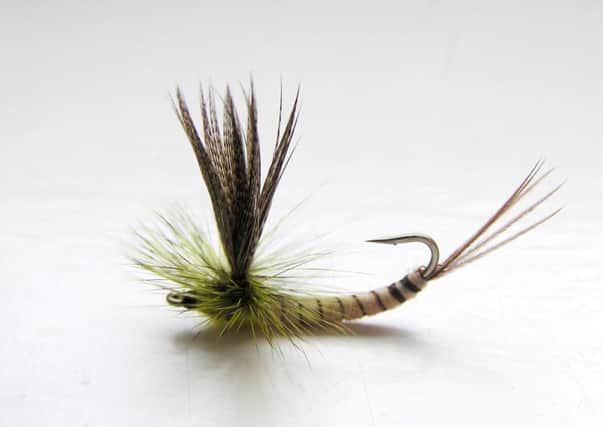Fly fishing: Flight of the insects raises river excitement


We still do not have the prolific hatches of yesteryear, but Ephemera danica has certainly made its presence felt over the last couple of years.
I had better qualify this extravagant claim by pointing out that the return of the mayfly to our northern streams is important to anglers, but not necessarily to normal people.
Advertisement
Hide AdAdvertisement
Hide AdThe mayfly is quite a big creature; the females can be up to an inch long and as a consequence become quite a popular menu item.
If you had been fed on nothing but gruel all your life, the opportunity to munch on a McDonald’s might appeal to you. Unfortunately, the return of the mayfly has had quite a significant effect on anglers’ behaviour.
The appearance of the first few Ephemera on a river system causes a mad panic in the minds of anglers who fish those rivers.
A couple of years ago, I was invited to fish the Derbyshire Wye. Unfortunately for me, someone had spotted a mayfly in Buxton the previous day so every angler and his uncle were out on the river.
Advertisement
Hide AdAdvertisement
Hide AdMayfly fishing just gets people like that; it is a spectacular sight to watch fish leaping a foot into the air to snatch lunch before it even alights on the water.
It is equally exciting to watch the trout competing with the swifts to find out which can gulp down the most mayfly.
Once the fish realise that the mayfly have appeared, they can put on a stunning display, lunging and swirling at the hapless creatures as they float, newly hatched, down-stream.
The dedicated fly fisher just cannot resist the opportunity to float an artificial mayfly over their heads.
Advertisement
Hide AdAdvertisement
Hide AdOn most rivers, mayfly put in an appearance for about three weeks every year, the main hatch being for around ten days.
Of course, there are no guarantees that fish will attack your carefully prepared and presented artificial effort with the same enthusiasm.
An effective pattern shows the right profile when viewed from below and has a number of ‘trigger’ features which attract the fish’s attention.
The one that Steve has tied for us was designed by that stalwart of Yorkshire fly fishing, Oliver Edwards.
Advertisement
Hide AdAdvertisement
Hide AdNow, don’t get me wrong, I enjoy the opportunity to fish during the mayfly season, but I don’t go bonkers; maybe it is an age thing.
Strolling along the river bank with my wife one evening near the end of May, I noticed that the sky was absolutely full of adult mayfly – spinners, as they are called – that would make their way back to the river the following day in order to lay their eggs.
I do not exaggerate, there were millions of these pale cream creatures performing an almost balletic dance, first rising into the air before falling back towards the trees, employing their wings as mini parachutes.
I suspect that even normal people would be mesmerised by this display.
Advertisement
Hide AdAdvertisement
Hide AdThat was my cue for action, the beat on the river was booked for the following morning and my anticipation grew.
The telephone call came fairly early the following morning; our daughter, Jenni, was on her way to hospital having started with contractions over-night.
Now I could not go fishing until I knew that young Alice had arrived safe and sound.
When she’s a bit older, I do not really relish having to tell her that I cannot make her birthday party.